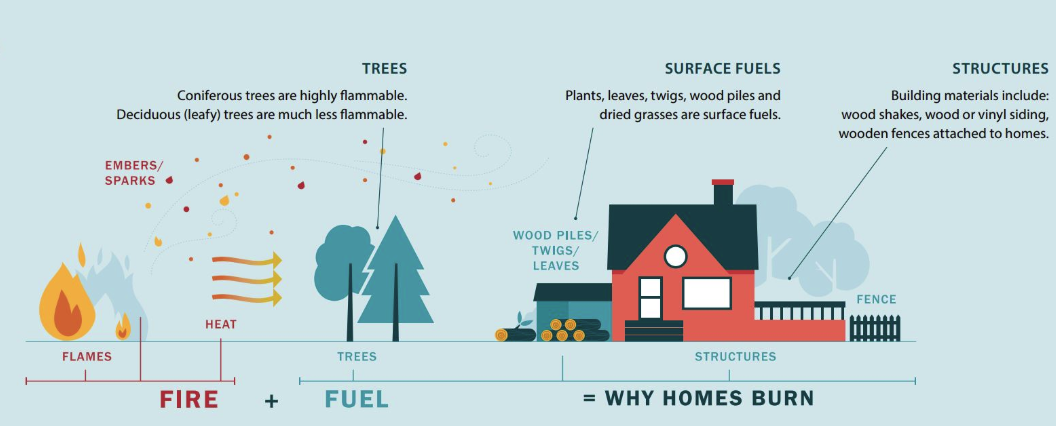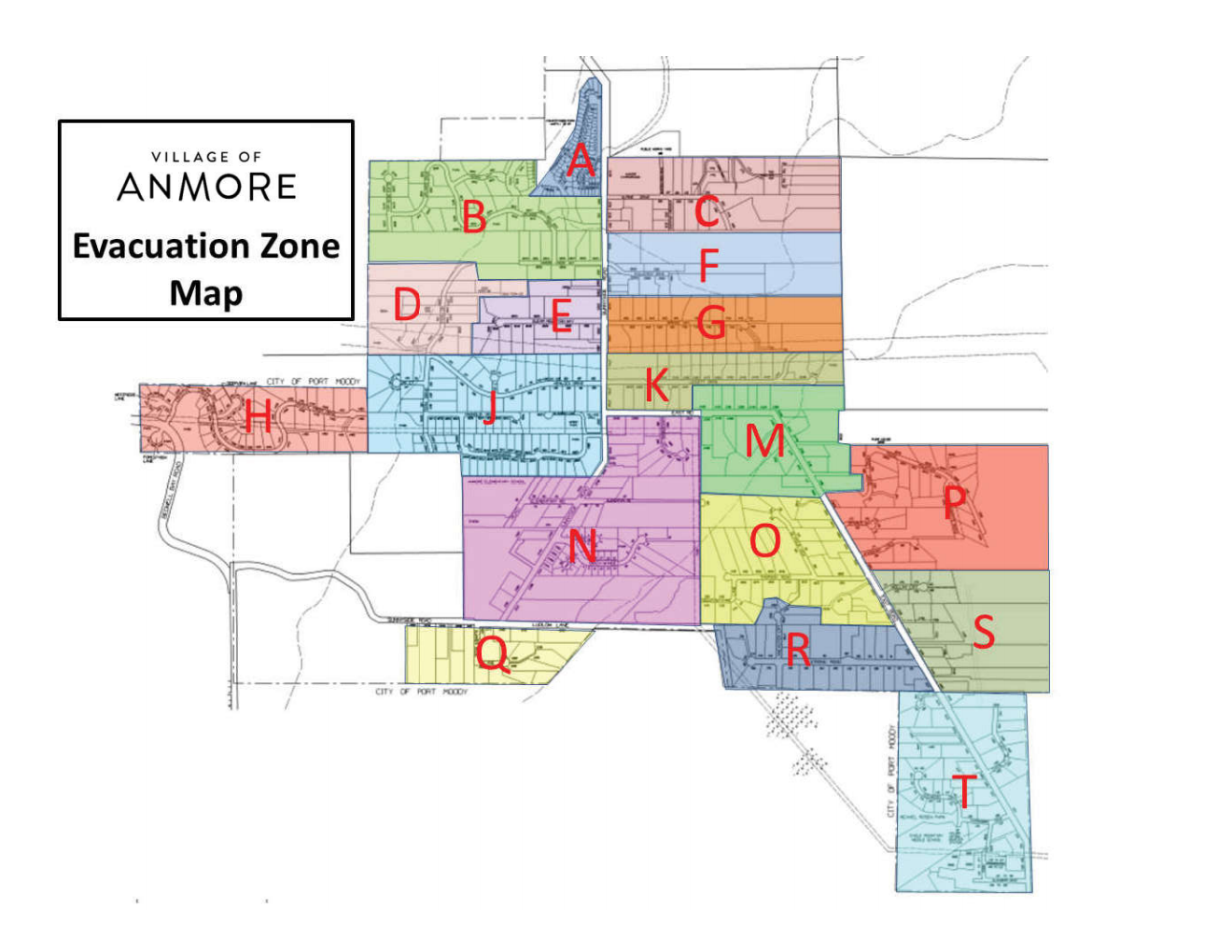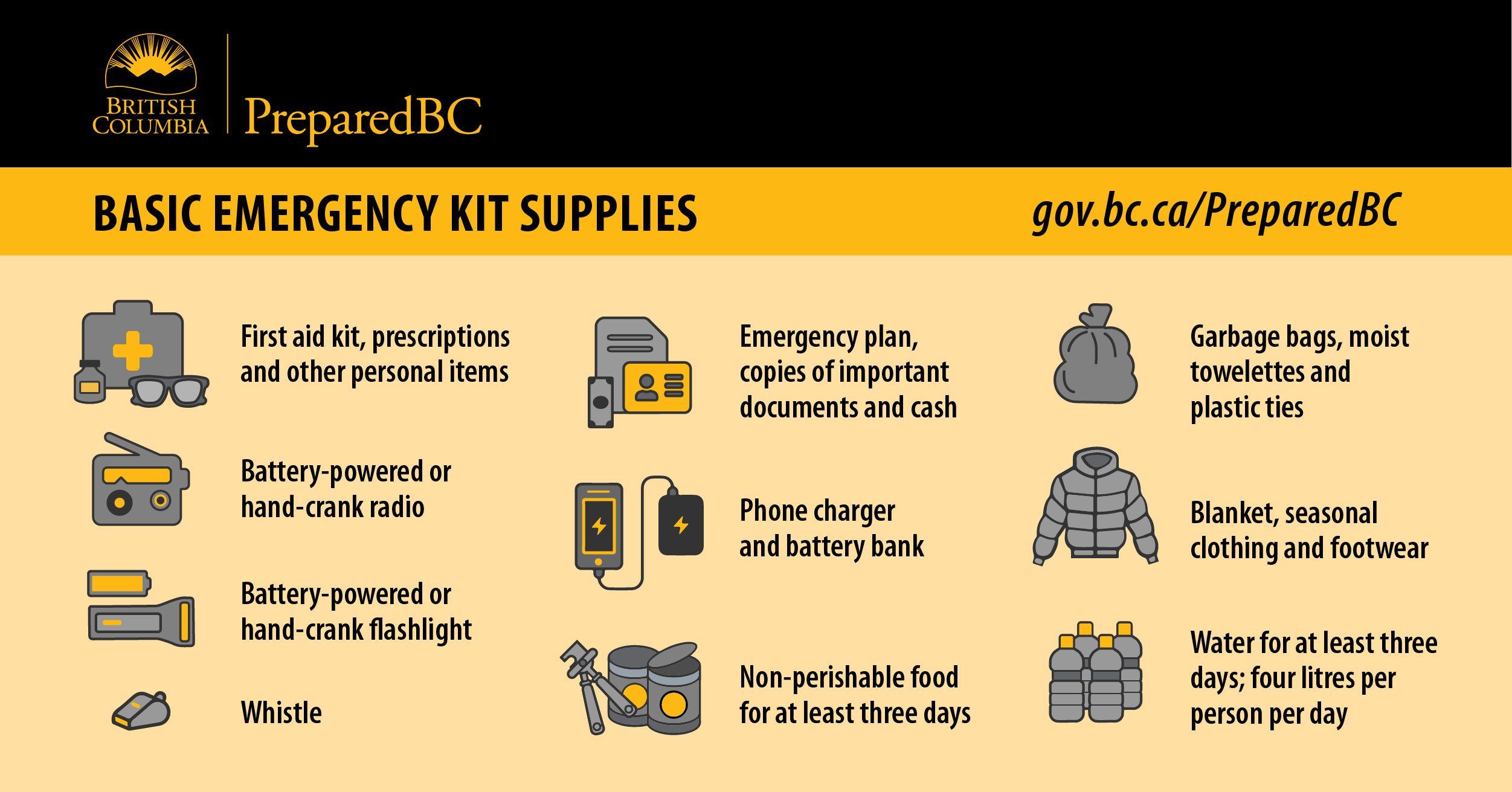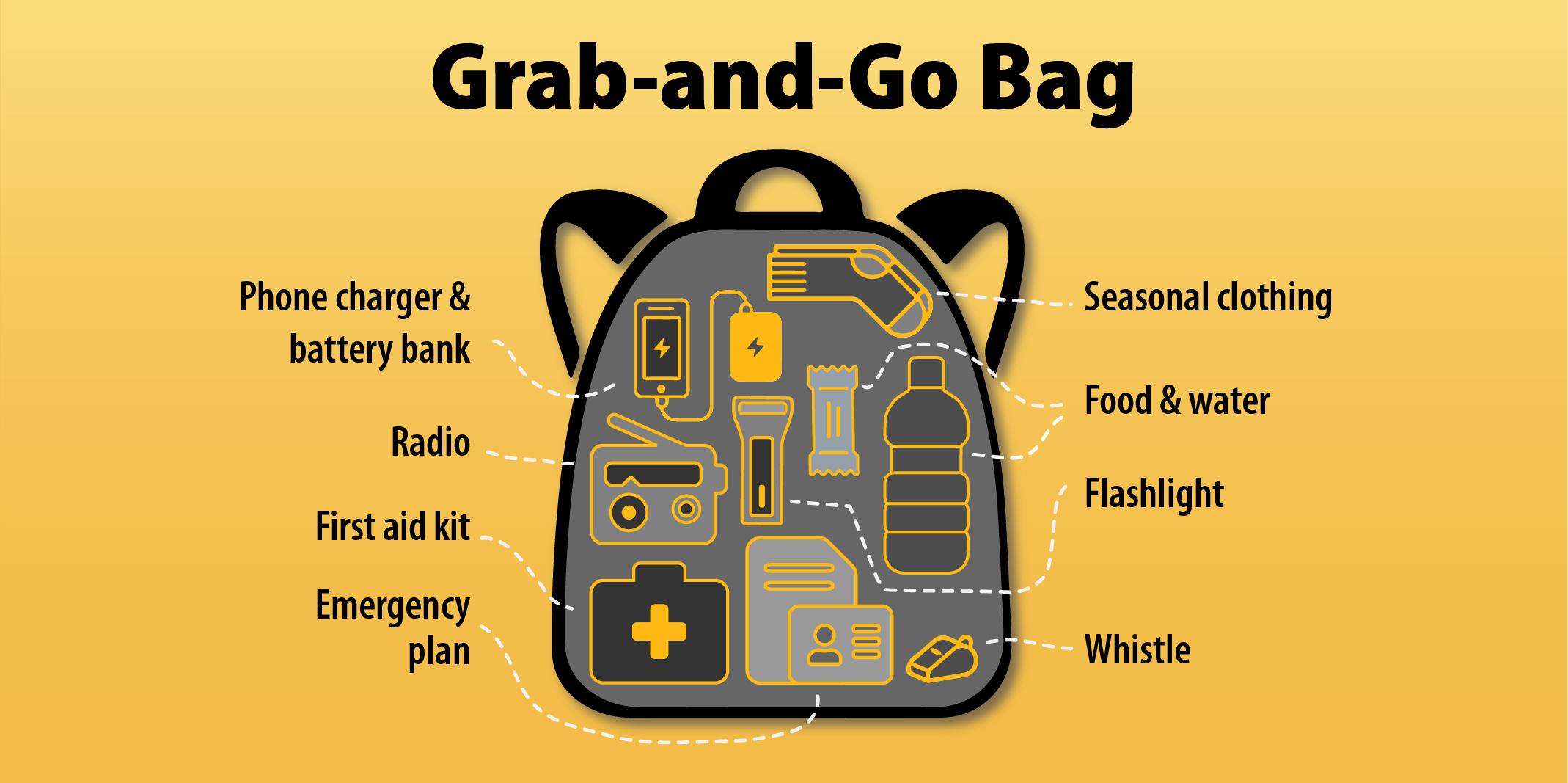Emergency Preparedness
Emergency Preparedness is a priority for the residents and staff of Anmore. Considering our limited accessibility routes and distance from major centres of emergency support, it is important for our community to be prepared in the event of a significant crisis.
Village of Anmore Emergency Guide
Introduction
The Village of Anmore is a unique community that presents a different set of risks in a disaster than many communities in the Lower Mainland. However, it is no more or less dangerous than most places in BC. The community has a significant interface with forests and contains areas with dense trees and open brush. There are a limited number of routes in and out of the community. The Village is also impacted by day-use populations who travel to and through the Village for recreation access to areas such as Buntzen Lake.
This guide is designed to provide residents with the basic information they will need to prepare for and respond to an emergency. Every household should be prepared to care for themselves for at least 72 hours, but this could be longer depending on the type of emergency. It is fair to say that post-disaster recovery in Anmore would be delayed longer than for most local communities. By preparing for an emergency, you improve the outcomes for you, your family, and your community.
Being Prepared for an Emergency
- Take a first-aid course and keep a first aid kit in your home and car
- Ensure that you have a working fire extinguisher in your home
- Create an emergency plan with your family:
- Have a paper list of phone numbers
- Pick a meeting place for your family to reunite after an event
- Know how to get information in a disaster
Prepare a Personal Emergency Kit in a backpack as a grab-and-go bag
- Food and water for at least 72 hours
- Flashlights and extra batteries
- AM/FM radio
- First aid kit
- Cellular phone charger
- Seasonal clothing and blankets
- Toiletries such as soap, a toothbrush and sunscreen
- Extra keys for houses and cars
- Cash in small bills
- Any medications necessary for your family
- Insurance documents for your house
Be prepared to care for your pets and animals. Have supplies ready to go:
- Leash, muzzle, harness or a pet carrier
- Food and water for 72 hours
- Dishes for food and water
- Dogs – roll of plastic bags
- Cats – small container and litter
Potential Risks for Anmore
- Wildland Urban Interface Fire
- Windstorm Event
- Earthquake
Wildland Urban Interface Fires
A Wildland Urban Interface Fires is a fire event that moves through wild areas and into a populated area.
Around the Village of Anmore there are several small wild fires every year. Most are readily managed by local resources who are experienced at dealing with this risk. However, as recent events in BC have shown, large fast-moving fires that start in the wild could impact the Village of Anmore more severely.
FireSmart is a Provincial Government initiative to help property owners understand the ways in which wildfire might threaten structures and property, and the steps that individuals and communities can take to reduce the risk to buildings and property caused by a fire. This starts with simple actions. When you are doing regular yard maintenance or making large scale changes to your landscaping, you can make choices that will help protect your home and community from wildfire and reduce the risk of fires spreading from or through your property.
Simple Steps:
- Clear flammable plants and vegetation from within 10m of structures, especially sheds and outbuildings
- Ensure that tree branches and vegetation do not overhang rooves
- Prune trees to a height of 2m above the ground
- Clear away dead and dry brush material within 30m of any structure
- Plant or replace vegetation with fire resistant species
Go to the FireSmart Homeowners Manual for more information:
Heavy Rainfall Events
Tips for Safety:
- Regularly clear nearby catch basins of leaves and debris to minimize the risk of street flooding during heavy rainfall.
- Exercise caution while driving, and always check DriveBC for the latest road conditions. Roads may become hazardous due to pooling floodwaters, which can appear deceptively shallow and obscure visibility of pedestrians.
- Use caution around bodies of water including creeks and lakes, particularly with children and pets. These areas may experience increased flooding risks, debris flow, and erosion, which can make the ground unstable.
- If you reside in a low-lying area that is susceptible to flooding, it is wise to have sandbags and other flood prevention tools readily available.
By following these safety guidelines, residents can help protect themselves and their community during extreme weather events.
Windstorm Events
Storms with high winds are becoming more common, more severe, and less associated with specific seasons. Historically, the Village of Anmore has experienced one or more extreme weather incident each year over the past 10 years.
Simple Steps:
- Before a Storm
- Remove large branches that overhang buildings
- Prune trees with large crowns to thin them and make trees more resilient to high winds
- Remove dead or dying trees before they become a threat
- When a storm is imminent – secure outside items that could become hazards
- Have an emergency kit, food and water prepared to shelter in your house
- After a Storm
- Stay 10m from any downed powerlines – never assume they are off
- Downed and trees, branches, and utility poles can collapse– never try to clear or move large debris
Earthquake
Coastal BC is prone to severe earthquakes and it is only a matter of time before one strikes. Anmore is likely to be isolated due to fallen trees, damaged roads, and downed power lines. There are likely to be delays in receiving medical assistance, supplies of food, water, and emergency gear, and clearance of debris from roadways.
Simple Steps:
- Before an earthquake
- Secure large furniture to walls and evaluate your home for high objects that could fall
- Evaluate your food supplies and consider having two weeks of less-perishable food on hand
- Water is critical for survival. Learn how to access and use water stored in your hot water tank, toilet tanks, rain barrels or other sources. Know how to make water safe for drinking.
- During an earthquake
- Drop, Cover and Hold On
-
- Wait 60 seconds after the shaking stops before you move
- Be prepared for aftershocks
- After an earthquake
- Make sure everyone is safe. Provide medical treatment to the injured immediately.
- Put out any fires in or around your home
- Stay away from downed or damaged powerlines
- Stay in your home if you are able to. Evacuate if it is not safe
- Listen for instructions on the radio or through social media
- Inventory your food and water
Evacuation
In many scenarios, the safest option is to evacuate away from the threat before it happens or to leave damaged areas after a disaster. The Village can issue messages about how to respond to a disaster.
Evacuation Alert
An Evacuation Alert indicates that residents should be prepared to leave at a moment’s notice. If people decide to leave at this point, it is called a Voluntary Evacuation.
Evacuation Order
If the Village decides that residents are at risk in their homes, they will issue an Evacuation Order. You are at risk and need to leave immediately. This can be enforced by the police. Residents are strongly encouraged to move to a Reception Centre and register so that officials know they are safe and can be connected with services to assist them while they are away from home.
Evacuation Rescind
Once the situation is resolved and residents may return home, the Village will issue an Evacuation Rescind order.
- Simple Steps
- Have a grab-and-go bag with your personal effects, medication and some food and water
- Secure your home and lock the doors
- Take your pets with you
- Forward your home phone to your cellular phone
- Follow instructions provided by emergency officials
- Register with the Emergency Social Services at a designated Reception Centre
Shelter-in-Place
There may be situations where the safest response is to remain in your home. This is called Shelter-in-Place. Stay inside, close doors and windows, and turn off kitchen and bathroom fans. Evaluate your food and water supplies. Be prepared to remain in your home for up to 72 hours.
Are you and your family prepared in the event of an emergency?
Take some time to review the links and resources below so that your family can be prepared. Understand that in the event of a significant emergency your family may need to fend for themselves for a period of days. Knowledge and planning goes a long way to keeping your family safe!
- Prepared BC – Printable HELP/OK signs
- Provincial Emergency Preparedness – Personal Safety
- Provincial Emergency Preparedness – Wildfire Information
- Evacuation Operational Guidelines
- Family Emergency Plan (Public Safety Canada)
- Family Emergency Kit (Public Safety Canada)
- Provincial Government Earthquake Preparedness and Response
- Winter Storm Preparedness Tips
Do you have special equipment, skills or resources that would be helpful to our community in the event of an emergency?
Please submit a Community Emergency Capacity Inventory to the Village Hall.
Are there any members of your household who may require special care in the event of a community emergency? (i.e. mobility concerns, special needs or health issues)
Please submit a Emergency Planning Functional Needs Identification to the Village Hall.
For more information about our Emergency Preparedness Program, please contact the Emergency Programs Coordinator.
For other external emergency contacts click here.
Village of Anmore Evacuation Documents
~ Maps | Page 1 – Traffic Control Map and Page 2 – Evacuation Map (as shown above)
Knowledge and planning goes a long way to keeping your family safe!
- FireSmart
- FireSmart Homeowners Manual
- Know how to make water safe for drinking
- Prepared BC – Printable HELP/OK signs
- Provincial Emergency Preparedness – Personal Safety
- Provincial Emergency Preparedness – Wildfire Information
- Evacuation Operational Guidelines
- Emergency Preparedness Guide (Public Safety Canada)
- Family Emergency Plan (Public Safety Canada)
- Family Emergency Kit (Public Safety Canada)
- Earthquake Preparedness (Emergency Management BC)
- Weather – Current Conditions for Anmore
- Weather Information – Environment Canada
- Winter Storm Preparedness Tips
Do you have special equipment, skills or resources that would be helpful to our community in the event of an emergency?
Please submit a Community Emergency Capacity Inventory to the Village Hall.
Are there any members of your household who may require special care in the event of a community emergency? (i.e. mobility concerns, special needs or health issues)
Please submit a Emergency Planning Functional Needs Identification to the Village.
Copies of the Village of Anmore Emergency Guide and the HELP/OK signs are available at Village Hall or you may contact us via email at: village.hall@anmore.com if you would like one mailed.






